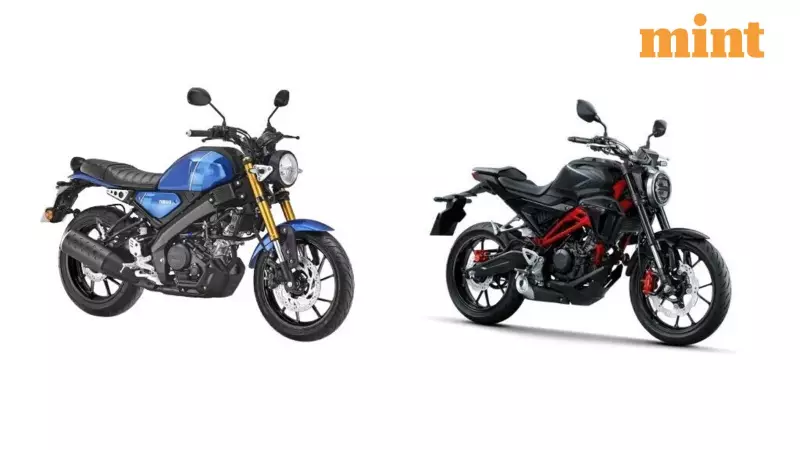
Yamaha has made a significant entry into India's growing neo-retro motorcycle segment with the launch of the XSR 155. This marks the Japanese manufacturer's first neo-retro sport motorcycle in the Indian market, arriving at an affordable price point of ₹1.50 lakh (ex-showroom).
The Rising Popularity of Neo-Retro Motorcycles
The Indian two-wheeler market has witnessed increasing penetration in the neo-retro motorcycle category, driven by young generation consumers who prefer old-school designs blended with modern technology and powerful powertrains. This growing demand has prompted several manufacturers to introduce their offerings in this segment.
What makes the Yamaha XSR 155 particularly interesting is that it stands as the first neo-retro sport motorcycle with a 150cc engine in the Indian market, creating a unique position for itself.
Yamaha XSR 155 vs Honda CB150R: Technical Comparison
Powertrain and Performance
The Yamaha XSR 155 utilizes the same reliable 155cc single-cylinder, liquid-cooled engine that powers the Yamaha R15 V4 and MT-15 V2.0 models. Paired with a six-speed gearbox featuring a slip-and-assist clutch, this engine delivers 18.1 bhp of peak power and 14.2 Nm of maximum torque.
In comparison, the rumored Honda CB150R draws power from a 149cc single-cylinder, liquid-cooled engine, also mated to a six-speed gearbox. The Honda unit produces 15.8 bhp peak power and 13.6 Nm of maximum torque, placing it slightly below the Yamaha in terms of output.
Dimensions and Weight
The Yamaha XSR 155 features 17-inch alloy wheels and comes with a 10-litre capacity fuel tank. The motorcycle has a curb weight of 137 kg, with a seat height of 810 mm and ground clearance of 170 mm.
The Honda CB150R also rides on 17-inch wheels but carries a smaller 8.5-litre fuel tank. However, it weighs significantly less at 124 kg. The seat height measures 802 mm, while ground clearance stands at 139 mm.
Suspension and Braking Systems
Yamaha has built the XSR 155 on the same Deltabox chassis used in the R15. For suspension, it gets an upside-down (USD) front fork and a monoshock absorber at the rear. Braking is handled by disc brakes at both ends, supported by a dual-channel ABS system.
The Honda CB150R matches this setup with USD front forks and a monoshock rear absorber. However, it features petal disc brakes at both ends for stopping power.
Potential Market Competition
Industry rumors suggest that Honda, India's second-largest two-wheeler manufacturer, has patented the Honda CB150R for the Indian market. Although Honda has not officially confirmed any launch plans, the motorcycle is already available in several key South-East Asian markets that share similarities with the Indian automotive landscape.
If Honda decides to introduce the CB150R in India, it would directly compete with the Yamaha XSR 155, creating an interesting rivalry in the neo-retro sport motorcycle segment.
The Yamaha XSR 155 has already generated significant attention among motorcycle enthusiasts, thanks to its appealing design philosophy, punchy engine performance, and competitive pricing. As the neo-retro segment continues to grow in India, the arrival of more competitors could further fuel consumer interest and technological advancements in this category.





